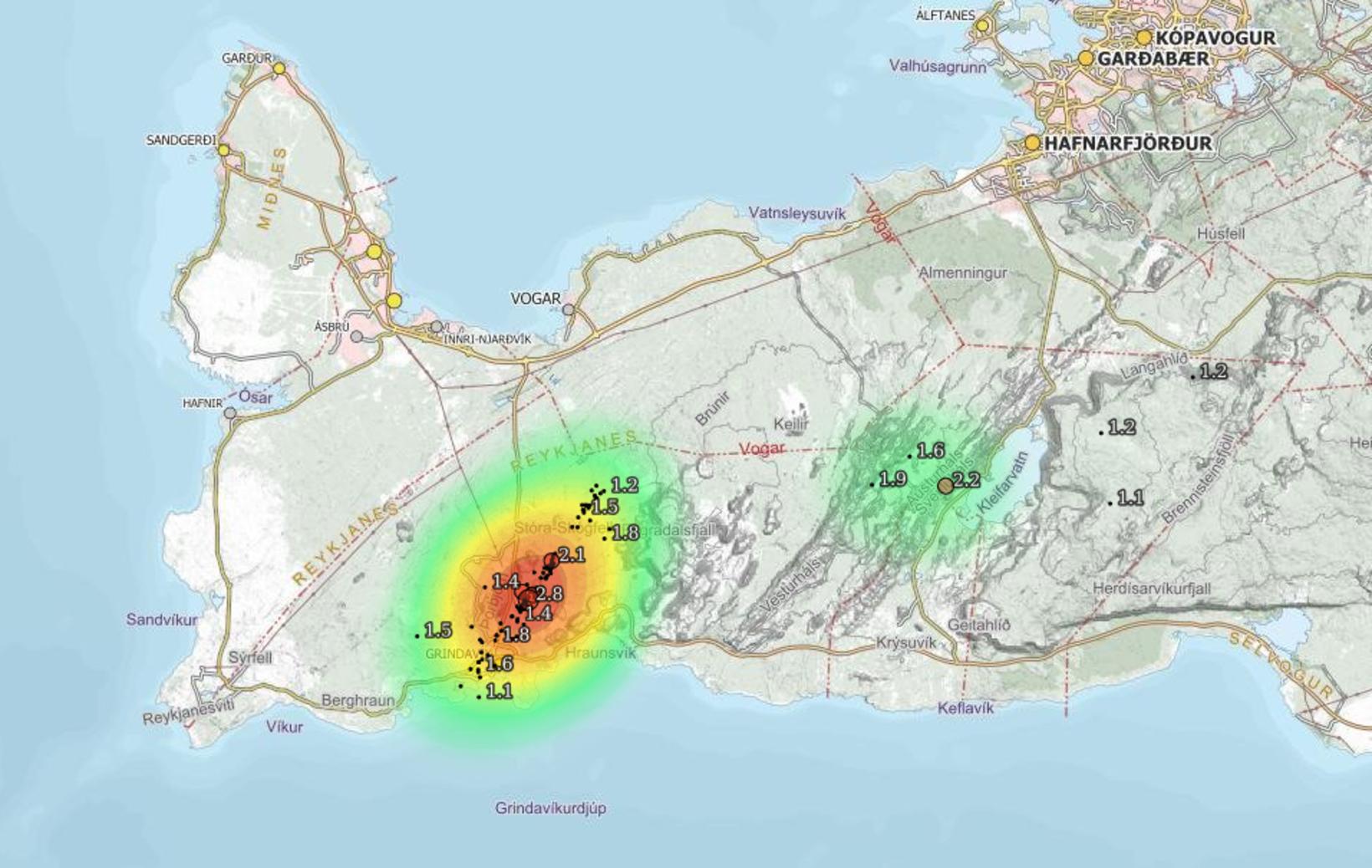Signs of magma being closer to the surface
Kristín Jónsdóttir, the director of natural-monitoring at the Icelandic Met Office, said at a Civil protection meeting this afternoon that the situation is in line with the past few days and the earthquake activity and deformation rate have decreased.
Jónsdóttir says that the number of earthquakes associated with the magma movement is both lower and slower with each passing day.
“The magma channel continues to expand and deepen, but it has expanded and deepened less in the past day than in the previous days.”
Magma has come closer to the surface
This decreasing activity indicates that the magma has entered the crust very high, as it is already very fractured and does not require much conflict to reach the surface.
While probability calculations still indicate that magma flows into the magma channel, it must be considered probable that it will erupt and that this increased probability will last at least for the next few days.
The data indicate that the most widening of the tunnel is around its center, in the area west of Hagafell. Therefore, scientists believe that this area is the most likely location for a volcanic eruption.
“The consequences of such an eruption depend on the size and it is difficult to predict it.”
She says that precise recording location is a prerequisite for predicting lava flow.
“But if lava comes up in the area in question, it can flow towards Svartsengi power plant or Grindavík, but also towards the north and east, depending on where exactly the lava comes up.”
Fastest event in 30 years of measurement history
According to Jónsdóttir, we are still in the middle of a chain of events, of all the many events on the Reykjanes peninsula in the past three years, which began in mid-October with a lands rise at Mt. Þorbjörn. The activity took a new direction on November 10, when tremors began to be detected at Sundhnúkar crater row.
“Then the signs of the upheavals that came with the formation of the magma channel one of the fastest events we’ve seen in 30 years of measurement,” she says, adding that the breakthrough was a major challenge for residents, scientists and responders. The time it takes for the earth to recover will possibly be proportional to the size of the breakthrough.
In addition, nature still manages to surprise us despite increased technology and knowledge.
Similar seismic activity between days
The activity at the dike, which lies beneath Grindavík, is almost unchanged since yesterday. About 1,700 earthquakes have been measured in the past day, 1,000 of which have been recorded since midnight.
This is stated in an announcement on the website of the Icelandic Met Office.
The largest earthquake since midnight measured 2.8 magnitude. It originated in Hagafell, 3.5 km north-northeast of Grindavík.






/frimg/1/53/30/1533092.jpg)




